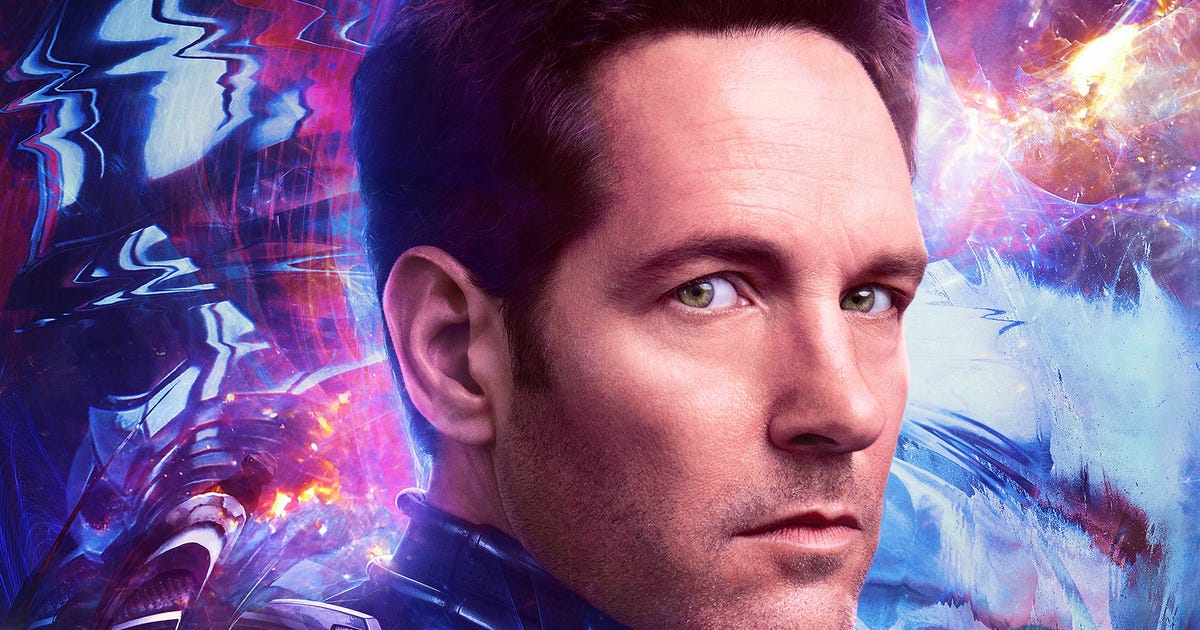
It’s time for another Marvel movie, and I guess it’s Ant-Man’s turn. Let’s welcome back the tiny superhero whose main superpower is Paul Rudd’s outsize charm, and whose main weakness is that everybody’s always belittling him — even the creators of his own movie.
Ant-Man and the Wasp: Quantumania is in theaters now. It’s a breezy, bizarro sci-fi adventure in the mold of Thor: Ragnarok, as familiar faces from the Marvel roster drop into an alien realm for fun and fighting before inspiring the locals to rise up and overthrow a hateful dictator. It also has a bigger significance for dedicated fans, introducing the Marvel Cinematic Universe’s major new villain Kang, played by Jonathan Majors.
Having rescued Janet van Dyne from the quantum realm in the previous Ant-Man and the Wasp film (and you’d be forgiven for remembering basically nothing about that movie), the Ant-gang is sucked back into the itty-bitty universe layered below the atoms of our full-size world. Returning director Peyton Reed again recruits Evangeline Lilly as Hope van Dyne, with Michelle Pfeiffer and Michael Douglas as her parents Hank and Janet. Kathryn Newton plays the now-teenaged Cassie Lang, Scott’s daughter, and in the quantum realm they encounter William Jackson Harper, Katy O’Brian and Bill Murray (yes, that Bill Murray).
It’s funny to think Ant-Man’s story began back in 2015 with a movie that was basically a heist with a final showdown in a child’s bedroom. By this third film, the action has scaled up to the microscopic yet larger-than-life quantum realm, a subatomic CG domain of impossible skies populated by insect-inspired critters, talking ooze-creatures and dudes with lightbulbs for heads. The weirdness of the micro-Mad Max setting gives rise to some entertaining jokes, arresting visuals and one or two mind-bending set pieces. It’s all very John Carter of Mars by way of sci-fi comics like Heavy Metal and Saga (or if those references mean nothing to you, Star Wars).
Cassie’s signal to the microscopic quantum realm kicks off the story as the Ant-family is sucked into this strange kingdom, like another planet on the head of a pin. That’s particularly bad news for Janet, who spent 30 years trapped in microscopic form. Old enemies come looking for her and her fam, forcing her to face up to what she did during exile.
Cassie (Newton) is the heart of the film, Hank (Douglas) does the science and Janet (Pfeiffer) is the plot powerhouse whose worst nightmare catches up to her. Meanwhile, Rudd’s character Scott Lang is… also there, I guess, though he’s far from the most interesting character. It takes ages for Scott to do anything of consequence, and Rudd coasts along looking baffled but always on the verge of a cheerful quip. Even MODOK, a comics character too ludicrous for any other movie, has a more emotional journey than the supposed hero.
If Quantumania doesn’t quite know what to do with Ant-Man, it really doesn’t know what to do with the other title character. Evangeline Lilly’s Hope van Dyne, aka the Wasp, is introduced as a world-changing scientist — which is mentioned as a tangent in a voiceover about Lang’s trips for coffee and selfie requests. Hope spends the movie either trailing around behind her mom or powering up to save the day (while never seeming to get any credit for it). I’d be amazed if Lilly has more than 30 lines in Quantumania (most of which are along the lines of “Keep going!” and “Scott, I can’t hold them!”).
Much more focus is given to the villain of the piece, Kang, another miniaturized exile to the quantum realm played by Jonathan Majors. He’s easily the best thing about the film, a melancholy dictator with soft-spoken magnetism who casually mentions how many Avengers he’s killed across the multiverse.
Because Quantumania is the start of a new chapter for the Marvel Cinematic Universe, kicking off Phase 5, that means Kang is the new MCU bad guy who’ll be causing trouble for our heroes for years to come (check out those post-credits scenes).
Fans have been prepped for the arrival of Kang, who was first seen in the Disney Plus series Loki, and the movie does a fine job introducing the villainous characters to fresh viewers. Still, the number of times characters refuse to divulge crucial information to string out the supposed suspense (“No time to explain!” “First we eat…” and “I’m trying to protect you!”) becomes rather tiresome.
Quantumania sets up the future of the MCU, and also manages to pack in some other bigger themes. The film opens with Scott marveling at how big he’s become — in terms of fame, anyway. But he’s coasting on his Avenger status, enjoying the perks without thinking about the world’s real problems. Meanwhile, his daughter Cassie shakes his complacency as she grows into a political firebrand. And although it accounts for only a few lines of dialogue here and there, Quantumania espouses some of the most charged political views to ever sneak into a Marvel blockbuster. The film opens with a pretty explicit criticism of incompetent police dealing with homeless people in San Francisco, for example. The bigger, more general theme is the strength of the little guy, even in the face of overwhelming power.
Ant-Man and the Wasp: Quantumania is a lot of fun, carried along by a charming gang of goofball heroes dropped into a weird and wonderful world to face a villain who’s big enough to change the entire franchise. The plot might not be anything innovative, but the trippy visuals and interesting themes prove that bigger isn’t always better.
